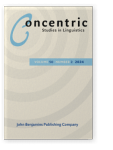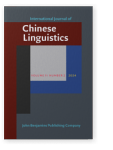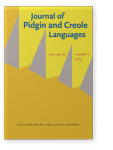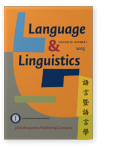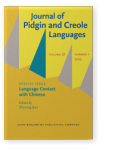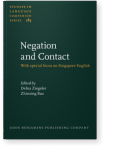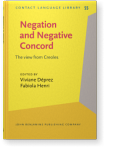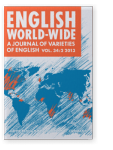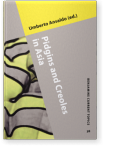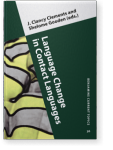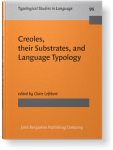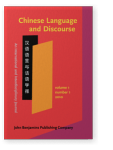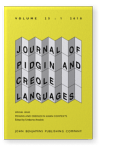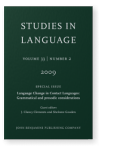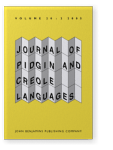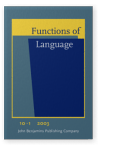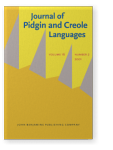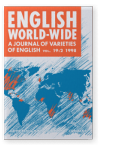Zhiming Bao
List of John Benjamins publications for which Zhiming Bao plays a role.
Journals
ISSN 2213-8706 | E-ISSN 2213-8714
ISSN 0920-9034 | E-ISSN 1569-9870
Titles
Language Contact with Chinese
Edited by Zhiming Bao
Special issue of Journal of Pidgin and Creole Languages 38:1 (2023) vi, 206 pp.
Subjects Contact Linguistics | Creole studies | Historical linguistics | Sociolinguistics and Dialectology
Negation and Contact: With special focus on Singapore English
Edited by Debra Ziegeler and Zhiming Bao
[Studies in Language Companion Series, 183] 2017. vii, 208 pp.
Subjects English linguistics | Semantics | Syntax | Theoretical linguistics
2023 Languages and language contact in China Language Contact with Chinese, Bao, Zhiming (ed.), pp. 1–13 | Introduction
China is ethnically and linguistically diverse. There are 56 officially recognized ethnic groups in the country, including the majority Han, with a 1.2 billion-strong population and Tatar, the smallest minority group with only 3,556 people residing in Xinjiang, according to the 2010 Population… read more
2018 Negation in Singapore English Negation and Negative Concord: The view from Creoles, Déprez, Viviane and Fabiola Henri (eds.), pp. 153–170 | Chapter
Singapore English is a new variety of English that has developed unique grammatical characteristics due to contact with the heritage languages of Singapore, especially Chinese. In this paper, we document the morphosyntax of negation in Singapore English, using data culled from available databases,… read more
2017 Negative raising in Singapore English Negation and Contact: With special focus on Singapore English, Ziegeler, Debra and Zhiming Bao (eds.), pp. 151–170 | Article
Negative raising is common in English and Singapore English, and a casual visitor to Singapore can easily observe instances of this phenomenon. It is not attested in Chinese, the main heritage language of Singapore. We know that Singapore English has incorporated grammatical constructions from… read more
2017 Introduction Negation and Contact: With special focus on Singapore English, Ziegeler, Debra and Zhiming Bao (eds.), pp. 1–10 | Article
2013 Review of Lim & Gisborne (2011): The Typology of Asian Englishes English World-Wide 34:2, pp. 241–244 | Review
2012 Bazaar Malay topics Pidgins and Creoles in Asia, Ansaldo, Umberto (ed.), pp. 151–167 | Article
Bazaar Malay is a Malay-lexified pidgin with a Chinese substratum spoken in the marketplace of Singapore (and elsewhere in Southeast Asia). Although it is no longer a lingua franca in Singapore today, it is nevertheless still spoken by older Singaporeans. Like Chinese and Malay, Bazaar Malay is a… read more
2011 One in Singapore English Language Change in Contact Languages: Grammatical and prosodic considerations, Clements, J. Clancy and Shelome Gooden (eds.), pp. 79–106 | Article
This paper investigates the grammar and usage of one in Singapore English, which exhibits the influence of both Chinese and English, the two dominant languages in the multilingual ecology of Singapore English, as well as the influence of relevant linguistic universals. The grammar of one is… read more
2011 Convergence-to-substratum and the passives in Singapore English Creoles, their Substrates, and Language Typology, Lefebvre, Claire (ed.), pp. 253–270 | Article
Singapore English is a non-native variety of English that has emerged from intense contact with the local languages, mainly Chinese and Malay. It has two passive forms appropriated from the local languages, in addition to the English passives (be V-en and get V-en). In this paper, I study the usage… read more
2010 Bazaar Malay topics Pidgins and Creoles in Asian Contexts, Ansaldo, Umberto (ed.), pp. 155–171 | Article
Bazaar Malay is a Malay-lexified pidgin with a Chinese substratum spoken in the marketplace of Singapore (and elsewhere in Southeast Asia). Although it is no longer a lingua franca in Singapore today, it is nevertheless still spoken by older Singaporeans. Like Chinese and Malay, Bazaar Malay is a… read more
2009 One in Singapore English Language Change in Contact Languages: Grammatical and prosodic considerations, Clements, J. Clancy and Shelome Gooden (eds.), pp. 338–365 | Article
This paper investigates the grammar and usage of one in Singapore English, which exhibits the influence of both Chinese and English, the two dominant languages in the multilingual ecology of Singapore English, as well as the influence of relevant linguistic universals. The grammar of one is… read more
2005 Systemic Transfer, Topic Prominence, and the Bare Conditional in Singapore English Journal of Pidgin and Creole Languages 20:2, pp. 269–291 | Article
Colloquial Singapore English has a novel conditional construction in which the conditional clause is not marked morphosyntactically, and must precede the consequent clause. We show that Singapore English, like Chinese, the main substrate language, is topic prominent, and the novel conditional… read more
2003 Review of Chappell (2001): Sinitic grammar: Synchronic and diachronic perspectives Functions of Language 10:1, pp. 116–122 | Review
2001 The origins of empty categories in Singapore English Journal of Pidgin and Creole Languages 16:2, pp. 275–319 | Article
The system of empty categories in Singapore English, a contact language with an endogenous ecology, arises through the interaction of three parameters: [topic-prominence], [pro-drop], and [wh-movement]. These parameters are reset under the pressure of the languages in the contact ecology, mainly… read more
1998 Why You Talk Like That? The Pragmatics of a Why Construction in Singapore English English World-Wide 19:2, pp. 247–260 | Article
In this paper, we examine one wh-construction in Singapore English, which signals a demand for justification, and show that there is a systematic correlation between its structural and pragmatic properties. We suggest that this wh-construction is based on the imperative, and inherits the… read more
